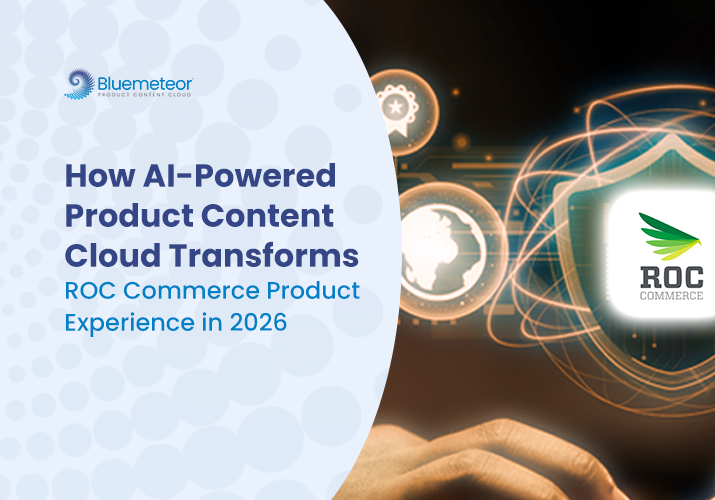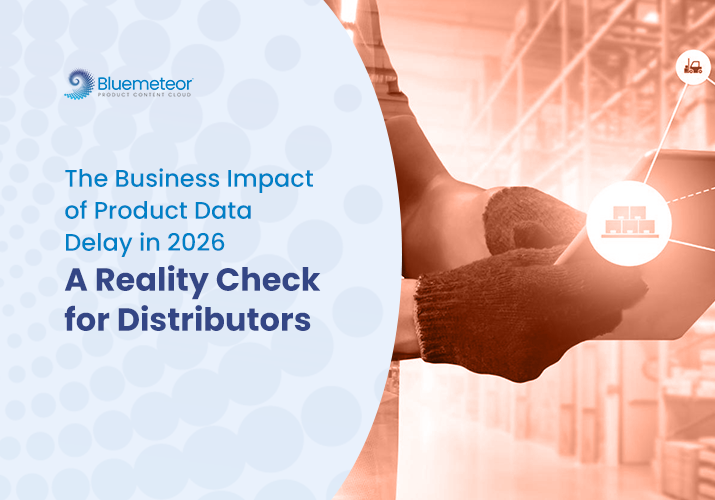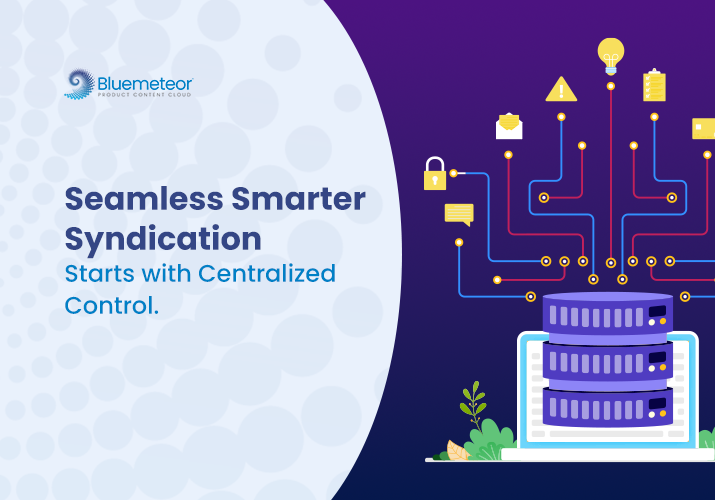What’s Slowing Down Your SKU Onboarding and Can AI Fix It?

Every distributor hits the same wall: product content mess. This post unpacks how AI in B2B SKU onboarding cleans that up, automating classification, enriching attributes, and accelerating supplier onboarding by 5–10x.
You’ll see practical examples, side-by-side comparisons, and why modern distributors are making AI the core of their onboarding workflow.
Why Choose AI for B2B SKU Onboarding Over Traditional Methods?
When every supplier sends product data in their own format, your internal team becomes a human middleware, fixing spreadsheets, filling gaps, and reworking content just to get SKUs live.
Here’s how the current workflow typically looks:
| Step | Manual Process | AI-Powered Process |
| Attribute Mapping | VLOOKUPs, copy-paste, tribal knowledge | AI auto-maps fields using past SKU logic |
| Data Cleanup | Spot fixes for every supplier file | Rules + AI clean and validate in real time |
| Classification | Manual tagging or reliance on rigid rules | AI classifies using pattern recognition |
| Attribute Enrichment | Team Googles specs or refers PDFs | AI scrapes and fills missing data automatically |
| Quality Control | Spreadsheet checklists | Confidence scoring + flagged validations |
Manual vs AI in B2B SKU Onboarding
| Step | Manual Process | AI-Powered Process |
| Attribute Mapping | VLOOKUPs, copy-paste, tribal knowledge | AI auto-maps supplier fields using historical SKU data |
| Data Cleanup | Spot-fixes for every incoming supplier file | AI + rules engine automatically clean and validate data |
| Classification | Manual tagging or rigid business logic | AI classifies based on contextual pattern recognition |
| Attribute Enrichment | Teams search specs manually or dig through PDFs | AI extracts data from PDFs, websites, catalogs |
| Quality Control | Spreadsheet checklists and visual inspection | Confidence scoring + auto-flagging for review |
Instead of relying on brittle templates or SOPs that break with every supplier, AI adapts to the real-world mess, and gets smarter as you go.
The Real Cost of Manual Onboarding
Manual SKU onboarding is more than just slow, it creates a bottleneck that can bleed revenue and crush team productivity.
Here’s what distributors experience when they’re still stuck with spreadsheets:
| Pain Point | Impact |
| Weeks-long delays to go live | Missed sales opportunities during launch |
| Inconsistent attributes | Poor SEO performance, higher return rates |
| High ops workload | Burnout, headcount scaling without output scaling |
| Backlog from supplier volume | Lost momentum, stalled growth |
AI in B2B SKU Onboarding: What It Looks Like in Practice
So, to understand it better, let’s go step-by-step through what a modern SKU onboarding flow looks like, with AI agents in the loop.
1. Smart Attribute Mapping
Instead of relying on your team to manually match supplier fields to your internal schema, AI agents analyze patterns across past data.
Even if one supplier says “Item_Desc” and another says “ProductTitle,” AI learns that both map to “Product Name.”
It reduces manual matching time by 80–90%, and prevents errors that break listings downstream.
2. Attribute Enrichment from Trusted Sources
Missing voltage, material type, or dimensions? Don’t worry, with AI, you can automatically scrape and extract missing attributes directly from:
- Manufacturer-provided PDFs
- Supplier websites
- Your own legacy SKUs
And it doesn’t guess blindly. Every value includes a confidence score so your team can review outliers, not redo the work.
3. Dynamic Classification
“Using AI, each SKU is classified based on feature cues, metadata, and historical decisions, effectively replicating how your most experienced merchandiser would think. As a result, there’s no more back-and-forth about where a product like a ‘Brushless Cordless Drill Kit’ belongs. Instead, AI applies consistent, scalable logic across thousands of SKUs.
4. Automated Content Validation
Rules like “Title < 100 characters” or “Must include voltage and weight” are enforced automatically.
AI flags SKUs that are non-compliant or partially complete before they clog your PIM. Bonus: It can even suggest quick fixes with pre-filled values pulled from its enrichment layer.
Why AI Beats Rules-Based Systems for SKU Onboarding
Many distributors tried solving SKU chaos with rigid rules engines, but they don’t scale with complexity. AI does.
| Criteria | Rules Engine | AI-Driven System |
| Flexibility | Struggles with edge cases | Learns from previous data behavior |
| Supplier Input Variability | Breaks with inconsistent labels | Adapts using language models + examples |
| Onboarding Speed | Weeks per batch | Hours or days, depending on complexity |
| Maintenance Effort | Constant manual updates | Self-improving with every onboarding round |
Outcomes From Real Teams Using Bluemeteor
| Metric | Before AI | After Bluemeteor AI Agents |
| Average Onboarding Time | 3–4 weeks per supplier | 2–3 days per supplier |
| Attribute Completeness | 60–70% | 95%+ with confidence scoring |
| Manual Touchpoints per SKU | 7–10 | 1–2 (mostly reviews) |
| Team Bandwidth | Always stretched | Focused on optimization, not grunt work |
Ready to Scale SKU Onboarding Without Scaling Your Team?
You’re not handing off control, you’re simply removing the friction.With AI in B2B SKU onboarding, your team finally gets to focus on strategy, not spreadsheets. And here’s the best part: you still make the final calls.
Only now, the system gets smarter with every new SKU you add.
AI Isn’t a Shortcut. It’s a System Upgrade.
Wondering how it all works? Simply book a demo, and we’ll guide you through the entire process, using your actual data. That way, you’ll see firsthand how AI can cut down manual work by up to 80%.
[Book a Demo] [Book a Consultant]
FAQs
Q. How accurate is AI-based SKU classification?
Ans. In most cases, classification accuracy exceeds 90–95%, especially once the AI has seen enough examples from your taxonomy.
Unlike generic eCommerce taxonomies, Bluemeteor’s models are fine-tuned to your unique catalog structure and category logic. Better yet, you stay in control, you can retrain or override decisions anytime, with just a few clicks.
Q. What data sources does the AI use for enrichment?
Ans. Bluemeteor’s AI SKU agents pull data from:
- Manufacturer product sheets (PDFs)
- Supplier-provided websites or feeds
- Your existing product catalog
- Public technical specification databases (when applicable)
Enrichment is done with confidence scoring and traceability, so your team always knows the source and reliability of the content.
Q. How long does it take to implement AI in SKU onboarding?
Ans. Most teams are up and running in under 2 weeks, timelines vary slightly based on your data volume and integration needs. From day one, we provide hands-on onboarding to ensure your SKU workflows are mapped, tested, and fully optimized for your actual use case, not a one-size-fits-all template.
We provide hands-on onboarding, so your SKU workflows are mapped, tested, and optimized for your real use case, not just a templated system.
Q. Is the AI customizable for our industry or catalog?
Ans. Yes. Whether you’re in industrial distribution, consumer electronics, MRO, or fashion, Bluemeteor’s AI is trained on your catalog structure and use case. We work with you to define classification logic, required fields, and enrichment sources, so your AI is purpose-built, not generic.
Q. What platforms or tools does Bluemeteor integrate with?
Ans. Bluemeteor integrates seamlessly with your existing stack, no need to rip and replace.
Whether you use industry-standard PIMs and ERPs (like Salsify, Akeneo, or Informatica), work with Excel/CSV files as a smaller team, or run on custom APIs for proprietary pipelines, Bluemeteor fits right in.
Just plug it into your current workflow and go.




